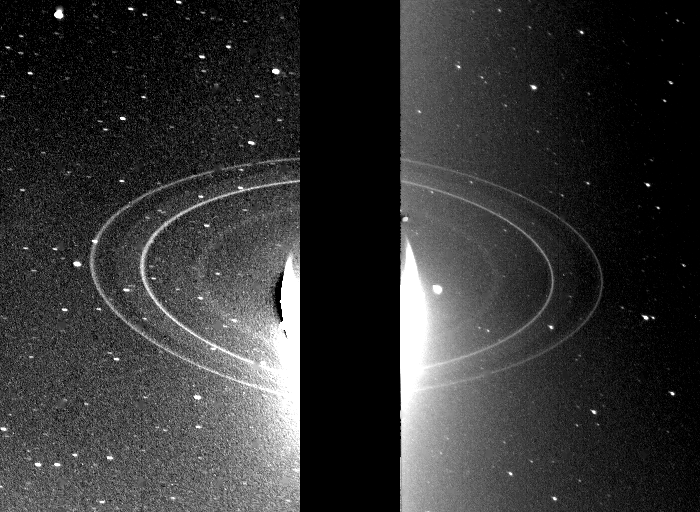NASA's
Voyager 2 is to become the second probe after Voyager 1 to reach interstellar space. NASA has recently released a statement regarding the probe that it may be reaching the interstellar space in the near future. This is because the scientists down here on Earth have noted a considerable increase in the amount of the cosmic rays being received by the probe.
 |
| Depiction of the Heliosphere src:nasa |
An increase of radiations of about
5% has been noted by the scientists. This rate is much similar to the radiations that were received by the Voyager 1 spacecraft during its interstellar drive. The Voyager 1 had made an exit from the solar system after about 3 months from the day the increase in the rate of incident cosmic rays was observed. Though it is not sure that the Voyager 2 will also take the same time to leave the heliosphere(the bubble-like region extending beyond Pluto dominated by the Sun) as its former version due to the different paths opted by them and also because of the variations produced in the heliopause(boundary layer of heliosphere) by the Sun's 11-year activity. The Solar activity refers to the coronal discharge, flares and the eruptions which keep on changing for a period of 11 years. Hence the scientists are not sure as to when the Voyager 2 would enter into the interstellar space.
 |
| Rings of Uranus src:wiki |
Voyager 2 was launched on
August 20, 1977 to study the other planets of the solar system. The Voyager program was basically designed for the purpose of studying far off planets like Jupiter and Saturn. Voyager had two parts- Voyager 1 and Voyager 2. The Voyager 1 was to study Jupiter and Saturn closely while the Voyager 2 was kept as a backup in case something unusual occurs and if everything goes right then it would be deflected towards Uranus and Neptune.
 |
| Rings of Neptune src:wiki |
The Voyager 2 was launched 16 days prior to Voyager 1 and went on as predecided. But after its launch, the Voyager 1 covered the gap and executed its mission perfectly then heading towards the interstellar space. After the success of the primary mission, the Voyager 2 went on the execution of the second mission to study the Uranus and Neptune. It passed by the two icy planets and sent some beautiful and informative images and details of the two and their moons much needed by the scientists. It was
October 2, 1989 when the probe said farewell to Neptune and headed for the interstellar space. Since then the probe has been moving in the heliosphere with a velocity of 15 kmps towards the interstellar space and has become one the four probes that will cross the heliosphere along with New Horizons, Pioneer 10, Pioneer 11 and Voyager 1.








Comments
Post a Comment